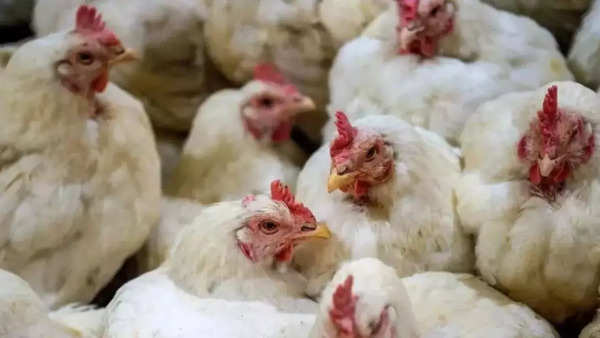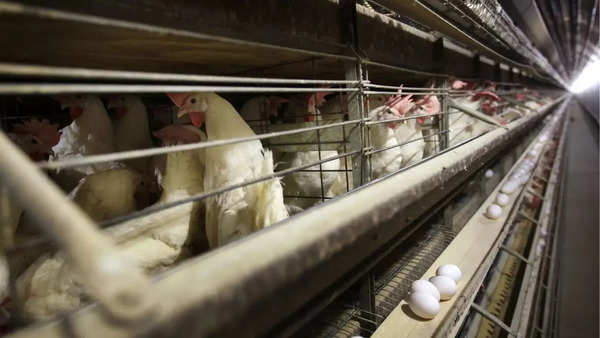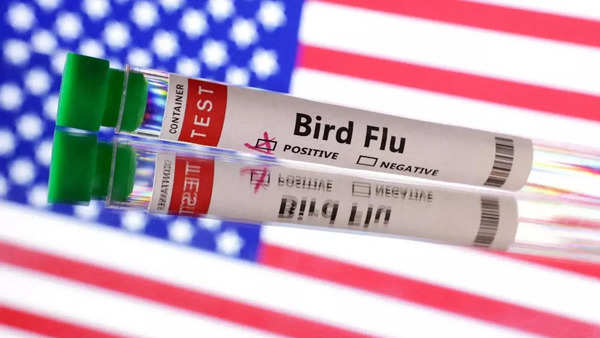The teenager hospitalized for a presumed case of avian influenza is in a critical condition, as per several media reports. The first-ever case of H5N1 Bird Flu has been detected in Canada in a teenager as per an official statement on the website of the western province. Provincial health officer Bonnie Henry in a news conference on Tuesday expressed his concern over his condition as he was a “healthy teenager with no underlying conditions.” Warning about the dangers of bird flu in young, Henry was quoted as saying by The Guardian: “It just reminds us that in young people this is a virus that can progress and cause quite severe illness and the deterioration that I mentioned was quite rapid.”
The teenager’s first symptoms a week before hospitalization were conjunctivitis or red eyes, fever and cough, Henry was quoted as saying by CNN. Henry added that the illness progressed to acute respiratory distress syndrome, or ARDS.
People with ARDS may face challenges in breathing and need ventilator support, however, the details about the teen’s treatment remained unavailable except that he’s receiving antiviral medications.
What is Bird Flu
Bird flu, or avian flu, is an infectious type of influenza and typically spreads among birds. However, in some rare cases, it can affect humans. H5N1 is among the 4 strains of bird flu virus, and is currently the dominant one, H7N9, H5N6, H5N8 being the other strains. Bird flu is spread by close contact with an infected bird, be it coming in close contact with the bird, its droppings or bedding, or through killing or preparing infected poultry for cooking.
Symptoms of bird flu in humans include fever and cough, sore throat, muscle aches, and conjunctivitis, while its severe complications include pneumonia, organ failure, and acute respiratory distress syndrome (ARDS).
Dangers of Bird Flu (H5N1) in teenagers and children
Although human infections with the virus are rare, it can lead to severe complications, particularly in vulnerable populations such as children and teenagers.
“Bird flu, specifically the H5N1 strain, poses significant risks to individuals including teenagers and children who are exposed to infected birds and dairy cattle. The virus can progress rapidly, causing severe illness, respiratory complications, and even death. The mortality rate for bird flu in humans is over 50%. This is particularly concerning considering the high case fatality rate,” says Dr Divya Joshi-Consultant-Infectious diseases, Fortis Hospital, Bannerghatta Road.
“In teenagers and children, the infection with the H5N1 virus tends to have a more aggressive course, as the immune system may mount an exaggerated inflammatory response. This response can lead to severe pneumonia, multi-organ failure, and in some cases, death. While most infections with seasonal flu in children may not result in hospitalization, H5N1 can cause life-threatening complications more often, particularly in children with no underlying health conditions,” says Dr Esha Gupta, Consultant Paediatrician and Consultant
Pediatric Intensivist
, Motherhood Hospitals, HRBR layout.
When a teenager or child contracts the H5N1 strain, they may experience symptoms such as fever, cough, conjunctivitis, headache and shortness of breath. In severe cases, the virus can lead to pneumonia, acute respiratory distress syndrome, and multi-organ failure. The incubation period ranges from 1 to 9 days.
The virus may affect children and young adults more as their immune systems are still developing that might overreact when exposed to the virus, leading to a phenomenon called a ‘cytokine storm.’ This overproduction of immune system molecules can cause widespread inflammation, affecting organs beyond the lungs, including the heart and kidneys.
“Even without underlying health conditions, young individuals can experience rapid deterioration. Luckily though, the transmission from humans to humans have not been established yet, as it has been evident from the recent Canadian case where the exposed individuals to the source were tested negative,” says Dr Joshi.
Another reason why H5N1 is more aggressive in kids is their narrower airways which could lead to breathing difficulties and inflammation in lungs.
“The H5N1 strain tends to affect individuals through the respiratory system, and children often have narrower airways than adults, which can exacerbate breathing difficulties when the virus causes severe inflammation in the lungs. This can lead to acute respiratory distress syndrome (ARDS), which can be fatal without immediate and aggressive medical intervention,” Dr Gupta tells TOI Digital.
Signs and symptoms of H5N1 in children and teenagers
The common symptoms of H5N1 bird flu in teenagers and children include fever, cough, headache, shortness of breath, fatigue, conjunctivitis (red eyes), and diarrhea. However, in severe cases, symptoms may rapidly progress to more critical conditions, including pneumonia, acute respiratory distress syndrome, and multi-organ failure.
How to protect teenagers and children from H5N1
Preventing H5N1 infection in children and teenagers focuses largely on reducing exposure to infected animals, promoting hygiene, and ensuring timely medical intervention if an infection is suspected. Below are key measures for protection:
1. Avoid contact with infected poultry
Since H5N1 is primarily transmitted through contact with infected birds, it’s important to ensure children avoid places with sick or dead poultry. This includes farms, live bird markets, or regions experiencing outbreaks of avian flu.
2. Hygiene and sanitation
Emphasize regular hand washing with soap and water, especially after handling animals or coming into contact with potentially contaminated surfaces. Children should avoid touching their faces, particularly their eyes, nose, and mouth, as this can facilitate the entry of the virus into the body.
3. Vaccination
Currently, there is no vaccine available specifically for H5N1, but seasonal flu vaccines can offer some cross-protection, and researchers continue to work on vaccines targeting avian flu strains. In the event of an outbreak, governments may distribute vaccines targeted at specific strains of bird flu if a human pandemic risk increases.
4. Protective gear in high-risk areas
For families living in or traveling to areas with a high prevalence of bird flu, protective gear such as masks, gloves, and goggles can help reduce the risk of exposure. This is especially important for individuals who work with poultry or in environments where birds are handled.
Bird flu spread in Jharkhand, thousands of poultry birds culled
I’m Manas Ranjan Sahoo: Founder of “Webtirety Software”. I’m a Full-time Software Professional and an aspiring entrepreneur, dedicated to growing this platform as large as possible. I love to Write Blogs on Software, Mobile applications, Web Technology, eCommerce, SEO, and about My experience with Life.







